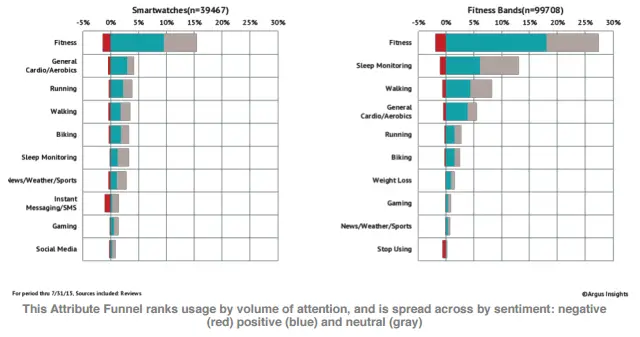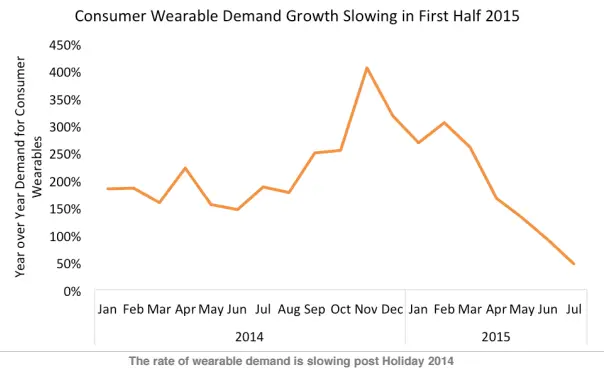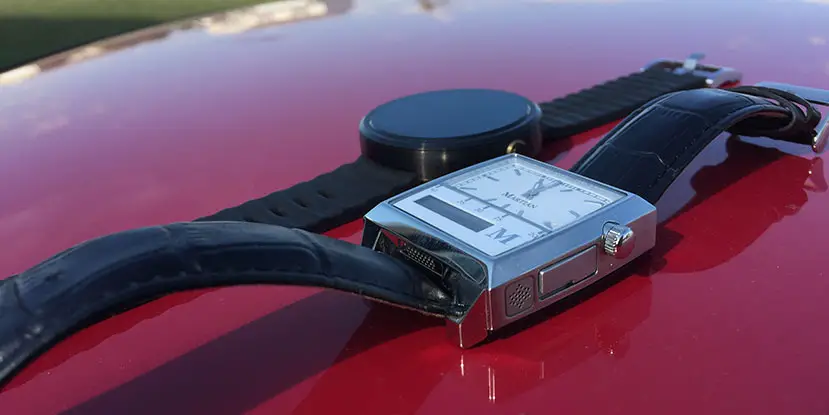Even though they’ve been around for some time now, wearables are still the “new kid on the block” when it comes to mobile technology. With the announcement and release of the Apple Watch last year, interest in wearables surged, but a report by Argus Insights has found that demand for wearables has slowed significantly since November of last year.
Before it was officially announced in March, interest in the Apple Watch and sales of other smartwatches like the Moto 360, were taking away “mindshare” from fitness band type wearables like the Fitbit.
“Our analysis of review volume for the wearables market correlates directly with unit sales volume, and we have seen a significant slowing in consumer demand for both wearables in general and fitness bands in particular,” said John Feland, CEO and founder, Argus Insights. “Consumers expect their wearables to do more than simply count steps, just as they expect to do more than just make phone calls with their handsets. It is clear that as the Apple Watch, the Moto 360, and the LG Watch Urbane outperform fitness bands in the hearts of consumers. Fitbit and others in this category will need to add more to their offerings to keep consumers engaged and coming back for more.”
Once the Apple Watch was officially announced, sales in Fitbit and other smartwatches climbed through the holiday season as many consumers didn’t seem too impressed with what Apple had to offer to the wearables market. What is interesting is that fitness tracking does remain at the top of the list of features consumers are looking for in their wearables, but at the same time want their wearables to do more than just track the number of steps they take each day or other fitness related tracking.

Using data compiled from approximately 328,000 consumer reviews since January 2014, the report reveals that after the holiday season of 2013, consumers briefly lost interest in wearables before steadily increasing demand reached its highpoint in January of this year where it was four times the level of a year earlier. Since then demand has slowed as can be seen in the chart below.

Even though demand has slowed since the holiday 2014 season, it should also be noted that demand for wearables continues to increase from where it was a year ago.
Why do you think the demand in wearables is slowing down? Let us know in the comments below, or on Google+, Twitter, or Facebook.
Last Updated on November 27, 2018.











Comments are closed.